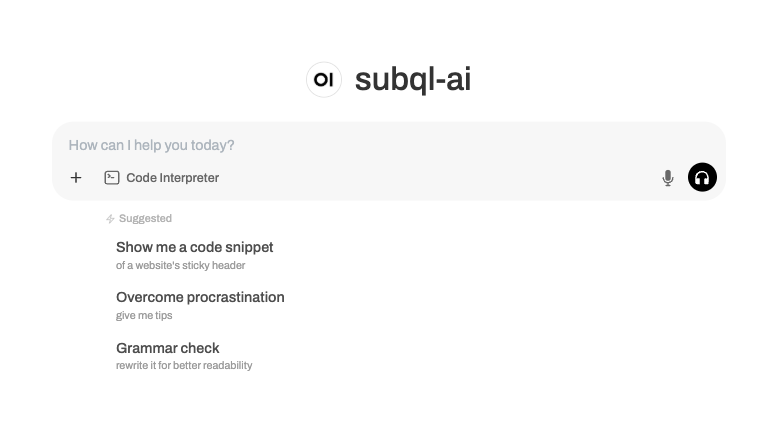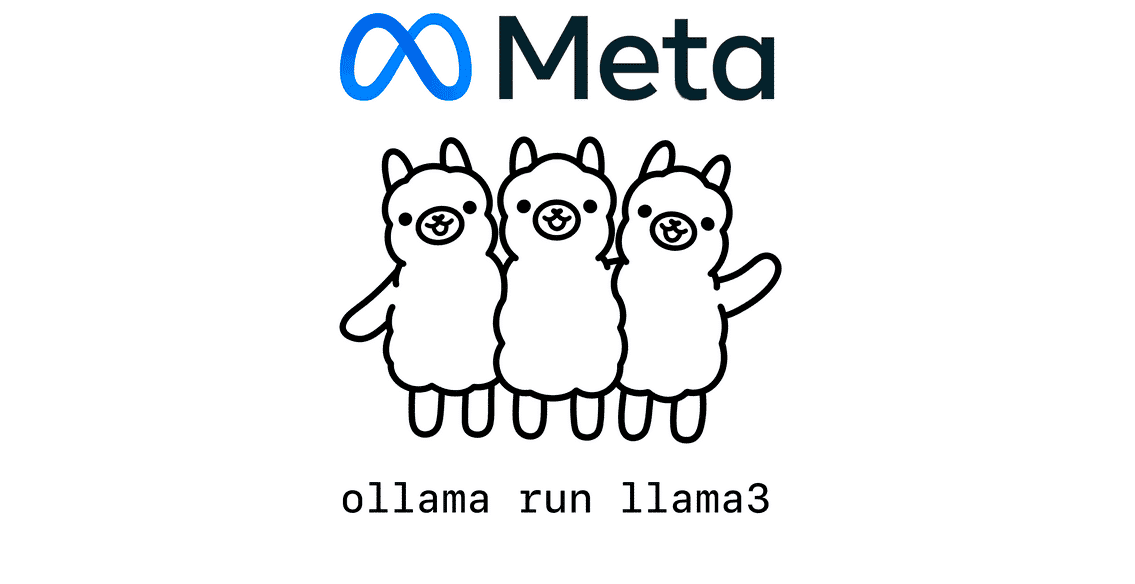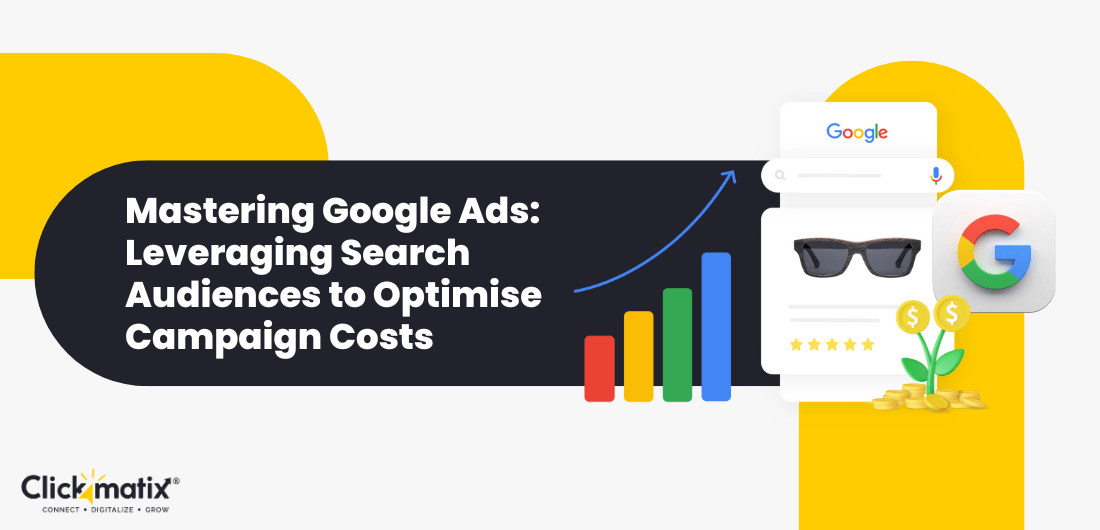What Is The ‘People Also Ask’ Box And How To Rank For It?
While searching for your queries on Google, you must have come across a box of questions below the top-listed search known as Google People Also Ask. This feature consists of content that can help you get a better understanding of the topic and explore various types of related questions or content on the search pages. […]
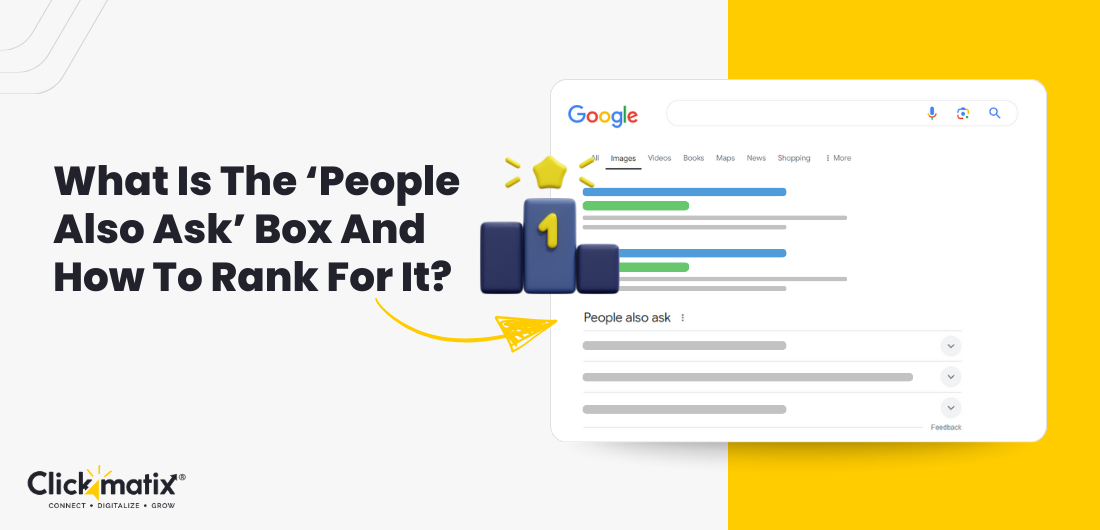
While searching for your queries on Google, you must have come across a box of questions below the top-listed search known as Google People Also Ask. This feature consists of content that can help you get a better understanding of the topic and explore various types of related questions or content on the search pages. With this breakthrough feature, Google allows users to seek answers to their related searches and concerns more effectively. This tech giant has also created a more customer-centric approach to marketing and content creation.
In other words, you will find all types of answers and solutions to related searches with the help of the Google People Also Ask feature. It is also important to note that you must prepare your SEO strategies to get a rank on People Also Ask. You must also seek expert advice while framing your strategy, especially if this is your first time dealing with search engine strategies.
Here, we have covered everything to help you comprehend the People Also Ask feature and achieve greater search results on search engine ranking pages.
What is People Also Ask (PAA) in Google?
The People Also Ask (PAA) box suggests related questions based on your search query.
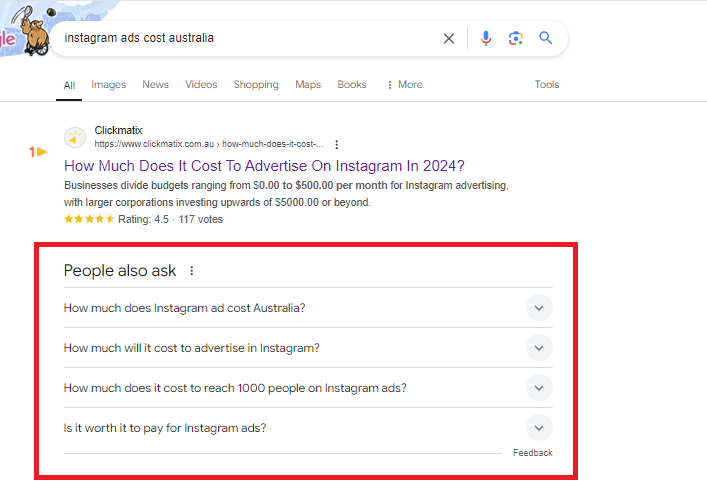
This Google feature taps into the collective curiosity of searchers, giving you a sneak peek into what other internet users are wondering. It’s a mate who’s always one step ahead, suggesting things you hadn’t thought of.
For example, imagine you are searching for “best beaches in Australia.” Suddenly, you’re faced with questions like “What’s the best time to visit the Great Barrier Reef?” or “Are there dangerous animals on Australian beaches?” – exactly the kind of questions you’d be asking if planning a beach holiday.
By understanding what people are asking, you can create content that directly answers their questions. In a nutshell, this friendly neighbourhood question generator will help you discover new stuff and understand what people want to know.
Features of ‘People Also Ask’ Boxes
1. PAA Boxes Can Appear in Different SERP Positions
Unlike featured snippets, which hold the top spots in search results, PAA boxes offer a versatile placement advantage. They can appear anywhere on the results page, providing opportunities for diverse content to gain visibility.
2. PAA Questions are Seemingly Infinite
PAA boxes are like magic question boxes. You click the arrow, and more questions pop up. It’s endless fun for curious minds! You can keep clicking and learning new things.
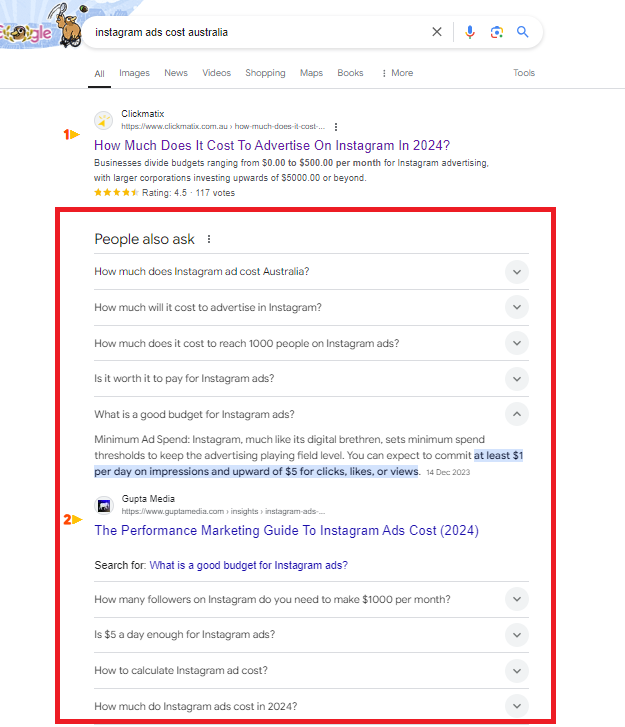
3. PAA Answer Formats Vary
PAA boxes are like fun surprise boxes. They show you information in different ways, like words, lists, charts, and even videos. It’s like Google is playing a guessing game with you!
4. PAA Questions Always Trigger the Same Answer
If your answer gets picked for a PAA box, it might show up in lots of searches. This means more people could see your website.
Why It Is Important To Optimise For PAA Boxes?
Imagine you’re selling your goods at a busy farmers’ market. You’ve got the freshest produce, but no one can see your stall. Frustrating, right? That’s what it’s like trying to rank on Google without optimising for PAA boxes.
PAA (People Also Ask) boxes are like digital fortune cookies, offering extra tidbits of information to curious searchers. And here’s why they matter:
-
Prime Real Estate:
PAA boxes often use more screen space than regular search results. That’s like having a bigger stall at the market. More visibility means more potential customers.
-
Answer the Crowd:
By addressing questions in the PAA box, you’re essentially handing people the answers they crave on a silver platter. This makes them more likely to click through to your site for a deeper dive.
-
Keyword Goldmine:
PAA boxes are a treasure trove of related keywords and questions. It’s like having a built-in market research team.
-
Build Authority:
Consistently appearing in PAA boxes establishes you as a trusted expert in your field. It’s like being the go-to farmer for the best tomatoes.
Overall, dominating the PAA box will likely ensure more traffic, higher rankings, and a stronger online presence.
How Does Google Generate People Also Ask Results?
Ever wondered how Google comes up with those extra questions under the “People Also Ask” box? Is it magic? Well, not really. Let’s break down how it works.
Imagine you’re trying to solve a puzzle. You start with one piece (your search), and then you look for other pieces that fit. That’s what Google does. It looks at millions of websites to find questions people ask.
So, how does it find these questions? Google’s smart computers look at what people search for and the websites that answer those searches. They find patterns and common questions. It’s like a big puzzle where each piece is a search, and Google puts the pieces together.
But here’s the thing: Google doesn’t just make up these questions. They come from real people searching for real answers. If you write helpful answers on your website, Google might show your questions in the “People Also Ask” box.
So, next time you see those extra questions, remember they come from people like you searching for answers and smart computers finding patterns.
How to Rank in ‘People Also Ask’ (PAA) Boxes
Cracking the code on PAA boxes can feel like chasing a moving target. But don’t worry, we’ve got you covered.
The basic process is simple: find a relevant PAA question, then optimise your page to increase your chances of becoming Google’s go-to answer. However, randomly picking questions is like shooting in the dark. You want to target questions that have serious search volume potential.
Let’s understand how to do this with the help of Ahrefs!
1. Find Pages that Rank for Lots of Keywords
The first step is to identify pages on your site that are already ranking well. Head over to Ahrefs Site Explorer, navigate to the Top Pages report, and sort by the Keyword column.
2. Pull their Keyword Rankings
Next, pick a high-ranking page and dive into its Organic Keywords report in Ahrefs. Filter the
results for keywords ranking in the top 20, with a decent search volume, and most importantly, those that trigger PAA boxes. Export this data to a CSV.
3. Scrape the PAA Questions
To uncover the specific PAA questions, paste your keyword list into Ahrefs’ Keywords Explorer. Export the results with SERPs included.
4. Look for Popular Questions
Create a pivot table in Google Sheets to see which questions appear most frequently across your target keywords and their combined search volume.
5. Make Sure You’re not Already the Source
Before getting too excited, check if you’re already providing the answer to that popular question. Search for one of the related queries and see if your page pops up as the answer source. If so, move on to the next question.
6. Check that You’re Eligible to Rank
Google often pulls PAA answers from the top 10 search results for a specific question. If your page isn’t ranking there, focus your efforts elsewhere.
7. Optimise Your Page
If you’ve made it this far, congrats! You’ve found a promising PAA opportunity. Now, it’s time to optimise your page:
Is the answer on your page? Ensure the answer is clearly stated and easy to find.
- Use relevant keywords: Incorporate the PAA question and related keywords naturally into your content.
- Format your answer: To make your answer stand out, consider using headings, bullet points, or numbered lists.
- Optimise for featured snippets: Improving your chances for featured snippets can also boost your PAA visibility.
Remember, consistency is key. Regularly analyse your PAA performance and iterate your optimisation strategy. With time and effort, you can increase your chances of ranking in those coveted PAA boxes.
Difference Between People Also Ask and Featured Snippets
Featured Snippets are like a single quick answer. Google picks the best part of a webpage and shows it to you. It’s like getting the good part of a story without reading the whole thing.
People Also Ask (PAA) is different. It shows you many questions that other people ask. It’s like Google listening to what others want to know and sharing it with you. The cool thing is that you can click on a question and see even more questions.
So, to remember:
- Featured Snippets: One answer.
- People Also Ask: Many questions.
Knowing the difference can help you write better for search engines. We’ll talk more about that in the next part.
How To Use PAA Questions To Improve Content Strategy
Ever stared at a blank page, wondering what on earth to write about next? Or maybe you’ve got a piece of content that feels flat. Well, you’re not alone. Content creators everywhere face these challenges. Google’s PAA (People Also Ask) boxes are here to help.
1. Generate Better Content Coverage
PAA boxes show you exactly what people are curious about. Let’s say you’re writing about image SEO. You know the basics, but where do you go from there? Dive into the PAA box for “image SEO”. You get a list of subtopics: image descriptions, image types, SEO-friendly images, and more. Not only that, you’ll also discover juicy keywords like “image alt tags” and “image titles”. It’s like having a built-in content outline!
2. Refresh Old Pages
The digital world moves fast. What was hot yesterday might be yesterday’s news today. PAA can help you breathe new life into old content. Check the PAA box for a topic you’ve already covered. Are any new questions popping up? Time for an update! Imagine having an article about Apple’s car and not knowing the latest information. A quick PAA check could turn that dusty piece into a fresh, informative read.
3. Meet User Intent
PAA is a window into people’s minds. It shows you exactly what they’re looking for. Are they curious learners, or are they ready to buy? The PAA box for “smartwatch” shows a bunch of informational questions, telling you people want to learn. A buyer’s guide would be perfect. But search for “best smartwatches” and the tone changes. People are shopping! Time for product reviews and comparisons.
4. Track Your People Also Ask Rankings
You can only directly track PAA rankings with regular search results. But there are workarounds.
- First, the manual method: search for keywords related to your content and see if your site pops up in the PAA answers.
- Second, use Google Search Console to find top search queries for your pages and then check those in PAA. It’s a bit more work, but hey, knowledge is power!
By understanding and utilising PAA, you can create content that’s not just informative but genuinely helpful to your audience. So, next time you’re stuck, remember the PAA. It could be the key to your next content goldmine.
What is contained in the People also ask box?
Generally, search questions with question tags such as how, why, where, what, and who tend to appear more often in the People Also Ask box. However, depending on the type of question asked by the user, search queries without these question tags can also show up in the answer box. Furthermore, there are five formats into which most People Also Ask results fall. These formats include paragraphs, tables, lists, mixed responses, and videos.
The search results displayed on the People Also Ask box primarily depend on the type of structured data available for that query. Google search often tends to display data or content that is readily available on the internet. Long-form or paragraphs and video-based content are easily available compared to other types of content on the internet. You can focus on improving the quality and reliability of your paragraphs and video-based content on your web pages.
Conclusion:
The “People Also Ask” (PAA) box can help search engines find your website more easily, especially in a busy place like Perth. By answering the questions people ask about your topic, you can show search engines that you’re an expert. Use clear and easy-to-understand words, organise your information well, and keep your website content fresh. Doing this can bring more people to your website, improve your search rankings, and make your SEO strategy more successful.
What's Your Reaction?










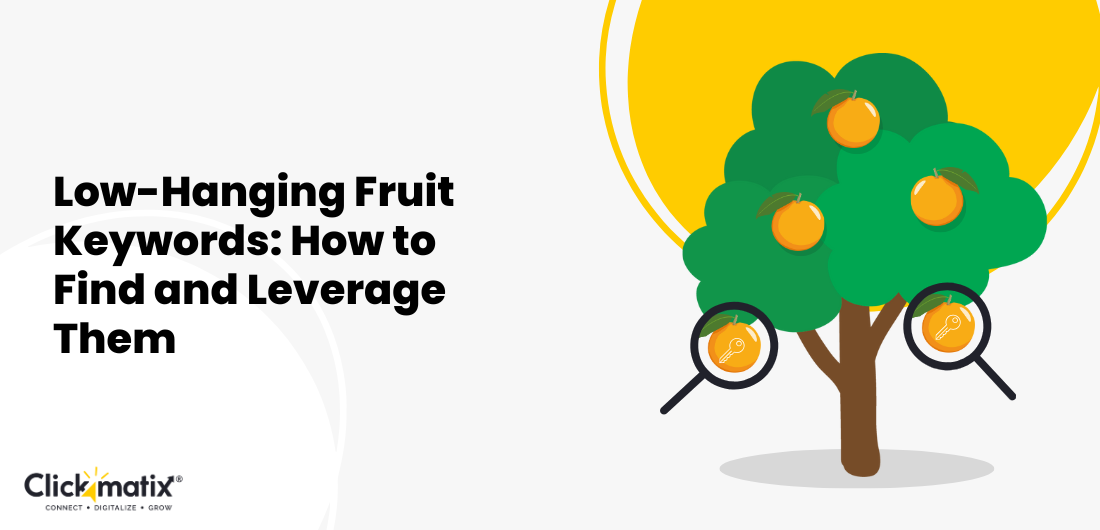










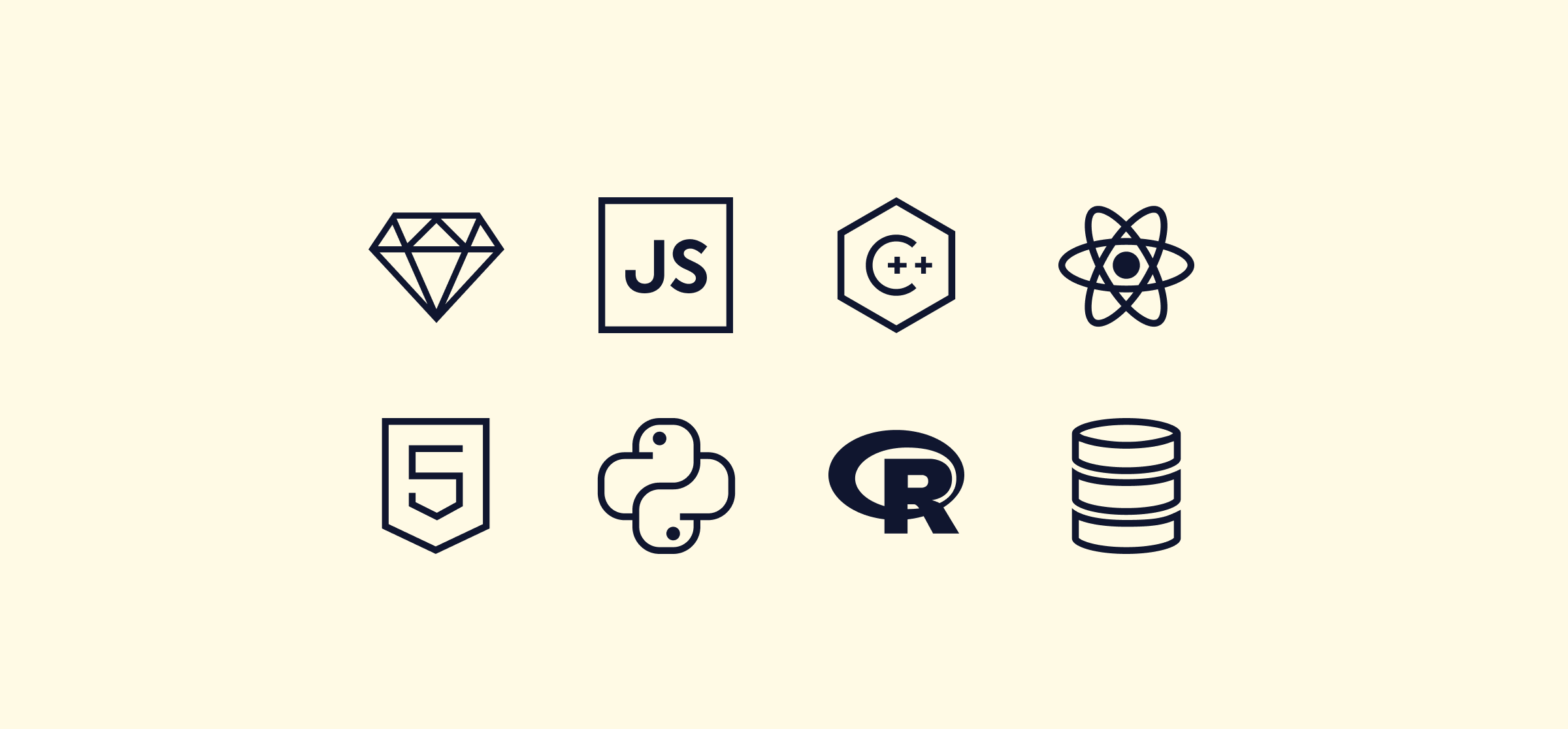


















.png)






















